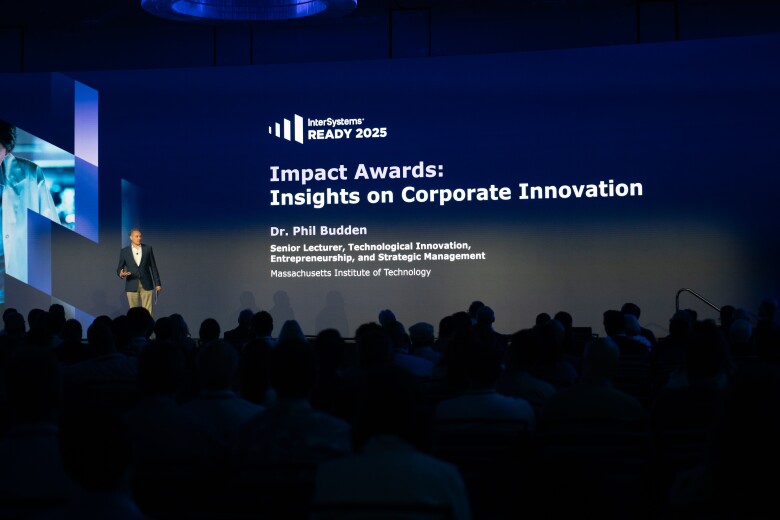As the world emerges from the worst of the pandemic, businesses face a new landscape. Customer behavior has changed significantly, traditional markets have eroded or modified, supply chains have altered course and new opportunities are visible. And although we have witnessed a mass migration to remote working, the jury is still out on whether it is a perfect fit for every business.
What is clear is that businesses want to seize the moment to embed agility, create leaner structures and use increased speed of decision-making to gain competitive advantage. After a focus on resilience, cash-flow management and workforce safety, digital transformation is high on the agenda again. Organizations are inspired by the speed with which they implemented new solutions and adopted new platform models during the pandemic.
Advanced analytics and artificial intelligence (AI), along with virtualization and increased cloud adoption will be high priorities in many enterprises. Yet all these transformations depend almost entirely on the quality of data management to support them. Without rapid access to high quality data, all digital innovation fails.
As we stand at the dawn of the post-Covid era, we have asked three of our senior leaders at InterSystems for their views on what could be in store for the year ahead when it comes to technology and data management.
Luca Ravazzolo, Product Manager, Cloud
The public cloud will continue to be a major area of expansion throughout 2021 and beyond. Lockdowns and restrictions on working have meant there are fewer personnel on the road fixing issues in data centers, or doing the unboxing, cabling, and other tasks in workplaces.
This experience has further accelerated the move to the public cloud, with enterprise adoption of AWS, Azure & Google hugely increased, spurred on by containerization and cloud-native technologies. Many types of enterprise applications like Customer Relationship Management (CRM), resource planning and sales applications will continue to move into the cloud. Oil and gas and major logistics companies are already taking advantage of public cloud computing and storage capabilities, for example, and banks are using their flexibility and scale for mobile applications. Process automation and remote working, the increased use of business collaboration apps and the adoption of services such as SASE (Secure Access Service Edge) will further accelerate public cloud adoption. Within businesses this will free up the time of internal technical service engineers for higher value tasks.
The public cloud will continue to meet the increased appetite for artificial intelligence and machine learning (ML) enabled services, but on a managed services basis to optimize flexibility, cost-management and provide rapid access to the most effective solutions as they prove their worth. This trend for “rent versus buy” will gain strength, opening up a new agility for companies. There has been so much talk about data as the new oil, but this is the year I believe when we will see a steady stream of solutions that are increasingly based on AI and ML as, to paraphrase Kent Beck, the creator of extreme programming, software delivers no value apart from runtime.
However, despite the huge capacity and capabilities available in the public cloud, as many enterprises seek to avoid long-contracts that lock them into one cloud services provider, hybrid cloud deployments will also expand. Many organizations will continue to keep their most sensitive or critical applications and data on-premises.
Joe Lichtenberg, Director of Product and Industry Marketing, Data Platforms
Analytics is changing the world in every industry and in pretty much every use case. It creates significant value to businesses in terms of the ability to garner new insights, create new services, improve customer experiences, streamline processes, reduce costs, and more. There are many different names used by analysts for incorporating analytics into applications, processes, and workflows (.e.g. operationalizing machine learning, adaptive applications, etc.), but really it’s all about using data and analytics as a strategic weapon in new ways.
The democratization of AI – bringing these capabilities to a wider audience – is real and it is happening right now. Many new tools suitable for a wider range of users and skillsets are helping to bring advanced analytics from the bleeding edge into the mainstream, benefiting organizations and their customers. But none of this democratization is a replacement for deep data science talent.
I also think this year we’re going to see the acceleration of Data and Services as a Service – which connects to Gartner’s 2021 IT trend, “Intelligent Composable Business.” The world is moving from capital expense to operational expense (from buy to rent), and to on-demand services. Combined with microservices, cloud, and API platforms, this trend will accelerate the creation and consumption of data and services on-demand because of the ease of use, agility, and superior economics. With better technology, easier access, on-demand pricing and more, it is now possible for organizations to innovate faster, and modernize their technology stack and their customer offerings while lowering costs – without sacrificing any one for the others.
Jeff Fried, Director of Product Management, Data Platforms
I expect this year will continue to be turbulent as different parts of the country and the world will transition through the pandemic and hoped-for economic recovery unevenly, which means challenges in supply chains, demand prediction, and financial market volatility. However, there will also be many opportunities too.
Telehealth, remote work, virtual conferences, and vigilance about ongoing disruptions (such as disease, climate, and political issues) will be here to stay and the need for business resilience will be greater than ever.
Agility and automation provide a means to adjust to rapidly shifting challenges and needs. Learning how to quickly implement new solutions and scale them up will help customers succeed in times that are likely to remain a little unpredictable.
More and more data and insight will be needed to cope with the transition times and the “new normal,” which means that scaling up data management capabilities will be essential. Legacy systems are already under stress, at risk of failure, and/or an impediment to agility. They have often grown to be complex and inflexible, so an ability to modernize and simplify them at low risk is a major help to organizations trying to keep up. The financial services industry in particular has gained greater self-knowledge during the pandemic and will be applying the lessons learned to its management of data while ensuring it has a robust architecture that will withstand future crises.




































